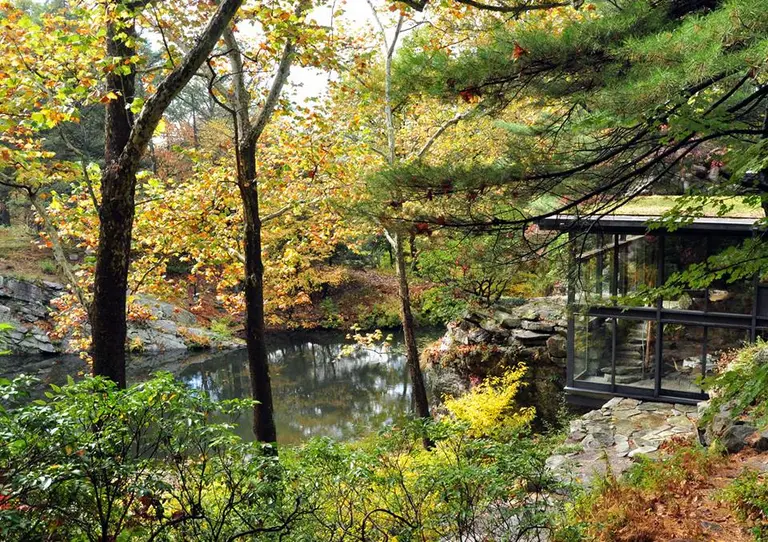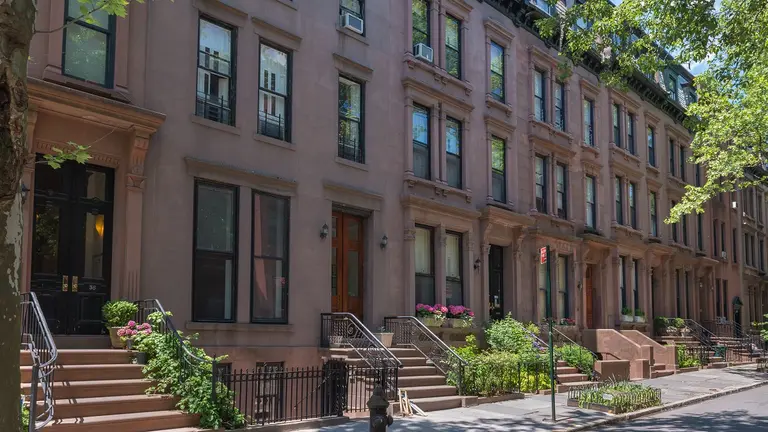Edible Real Estate: These Amazing Gingerbread Houses Are Totally Turnkey
More amazing cookie creations this way

Wright’s studio, surrounded by windows and the wooded landscape. Photo courtesy of Manitoga/The Russel Wright Design Center.
Can drinking fountains make a comeback in NYC? [CityLab] There’s a tiny island called Tinian, 8,000 miles from New York in the Pacific Ocean, where you’ll find NYC locations like Broadway, Central Park, Greenwich Village, and Riverside Drive. [Gothamist] A table lamp designed by Frank Lloyd Wright for his 1911 Taliesin house in Wisconsin is now available […]
Winston Marshall, Banjoist for Mumford & Sons, Buys $3.2M Nolita Pad Are Yuccies the New Hipsters? REVEALED: Bjarke Ingels Design for 2 World Trade Center Own a Charming Wood Frame Church in the Catskills for $99,000 J.P. Morgan’s 120-Year-Old ‘Great Camp Uncas’ in the Adirondacks Can Be Yours for $3.25M 98 Percent of Manhattan Rentals […]

Historic brownstones in Brooklyn Heights via City Realty
By now you’ve probably heard about the fire raging on in Williamsburg, but you probably haven’t seen these unbelievable images of the neighborhood frozen in ice. [NYDN] The American Bible Society has sold its Lincoln Square headquarters for $300 million. [WSJ] 10 of Frank Lloyd Wright’s buildings, including the Guggenheim Museum in NYC, have been […]

Image © Sarah Ross via flickr cc.
Hipsterless Brooklyn: If the title wasn’t great enough, the vintage, post-WWII photos in Time’s online collection are pretty amazing. The Park Slope home of Dwell Magazine’s Editor in Chief Amanda Dameron is everything we’d expect, from hand-blown glass wind chimes to children’s book displays. Take the virtual tour on the New York Times. Archiwindows illustrations by […]

Photo courtesy of Beyer Blinder Belle

Gaudi’s proposed building in the New York skyline, as imagined by the TV show “Fringe.” Image © FringeTelevision.com
A developer is demanding volunteers pay $1M if they want to keep their community garden. [NYP] The Sultan of Brunei is hotel shopping in NYC and London and is reported to have has his eyes set on The Plaza. [WSJ] A campaign to build a light rail system on Staten Island has been relaunched—nearly 10 […]